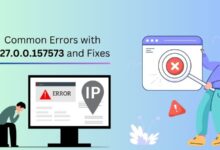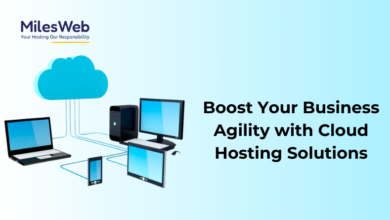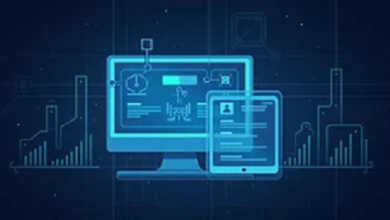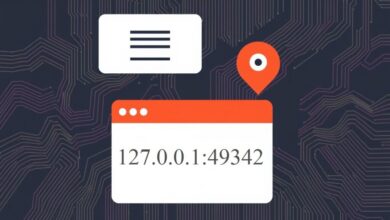
 Ransomware-as-a-service puts dangerous tools in the hands of those without the technical knowledge to develop them, allowing a new generation of malicious actors to lock down critical systems.
Ransomware-as-a-service puts dangerous tools in the hands of those without the technical knowledge to develop them, allowing a new generation of malicious actors to lock down critical systems.
The potential attackers range from hackers and hacking groups to geopolitical organizations, focusing on infrastructure across the country or looking to gain access to vital secrets.
For all businesses, the threat of attack can have grave implications, from disruption to operations and reputational harm to massive financial losses.
While Cybersecurity awareness has increased, the increasing variety of sophisticated and difficult-to-combat attack methods means its defenses haven’t kept up. 93% of local business security parameters are susceptible to being breached within two days.
How To Ensure Security First
In addition, in most instances, the insider with access to credentials can gain complete control over the network. Just because a device is considered secure is not a 100% secure approach. A device that has weak defenses can easily be the target of attacks.
Axis believes that the right security approach is to use strict policies, processes, and a degree of transparency and clearness that will help you avoid the threat of human error.
Read: A Perfect Guide for Node JS App Development
Cybersecurity Lifecycle
It’s all about using the right tools at the right time and taking a holistic view of lifecycle management that ensures security is the norm.
Trust is not just a word. Giving customers honest details about our internal processes and policies will, in the end, reassure them of our commitment to cybersecurity within the company.
The chain is made of unbreakable material.
Security is the main focus for every network-attached device we develop and design. Any weaknesses in the development chain could expose the product to security vulnerabilities at any time, and that’s why Axis’s strategy puts security at the top of the list at each deployment stage.
Our fundamental framework is Axis’ security development model (ASDM), Axis Security Development Model (ASDM) is the one that defines the critical security measures; ASDM covers everything from thorough testing and analysis to strict management, making sure that all those affected are aware of – and rated on their understanding of security risks.
This is the foundation of each step of the lifecycle of a product. Without secure development, vulnerable holes in firmware or software could get through the security net.
Read: The Significance of Cloud Services
For instance, the US security agency’s National Vulnerability Database published over 8000 vulnerabilities in the first quarter of 2022. This is an increase of just a little year-over-year, and each of them could allow an attacker to gain access. Announcing an update isn’t enough.
Making sure that a company and its suppliers adhere to a clearly defined framework like ASDM ensures that the base software is secured by design and by default.
Protecting suppliers
The supply chain’s security could be even more vital. Your product’s being removed from your control in a short time opens up an additional opportunity to use subterfuge.
Unscrupulous agents can introduce compromised components or damaged components to final products. Even distribution gives attackers the chance to install malicious or modified firmware that could compromise security efforts made during the software development phase.
At Axis, we tackle this issue by two methods. We have our suppliers provide us with specific information about the supply chain processes they use. They also confirm that the software was not modified. We also secure our devices on a hardware level.
Secure boot eliminates the risk of malicious firmware being launched on deployed devices. Even if an attacker successfully installed an untrusted update, We ensure that our hardware is returned to a trust-worthy state.
Read: Top Software Companies In France That Will Blow Your Mind
Axis devices are equipped with Axis devices, including our Edge Vault, which can securely identify new devices when they are installed and secures each device’s digital certificate and unique identification numbers.
From 2022 onwards, we’ll be adding signed video, ensuring that every video frame is verified with an encrypted checksum signed by an individual device’s ID. They are making security a priority in hardware design – including components like TPM modules for storing keys and certificates, which makes for a challenging time for hackers.
Security’s entire system
We understand that the security of devices isn’t enough. Therefore our solution must go further than that. Axis is proactive and works with our administrators of endpoints to ensure that hardware is being deployed and maintained in the best manner possible.
A large part of this is via our Axis Hardening Guide, which offers a solid foundation configuration and the best methods for a secure device management system that can keep up with the ever-changing security threats.
The Tool for managing devices Manager software is intended to serve as an all-in-one solution for administrators, making installation and maintenance simple.
One Tool that is simple to use and allows for a smooth transition to management. Communication that is transparent about vulnerabilities is also essential.
Devices must be maintained, and the manufacturer has to play its part. A sound strategy for developing and deploying firmware means listening to your customers and identifying their requirements.
Axis offers quality-of-life and feature upgrades five to every year, but implementing upgrades at the same frequency (and altering the features set) is neither advisable nor feasible for many large companies.
Our long-term support tracks block out any new feature updates and focus solely on stability and security updates, which are released every two years and, most importantly, help users keep third-party integrations while keeping the features set of devices in place.
Every device eventually reaches end-of-life or the end of support. If they do, the users need to be aware – and must also be aware of what they should do.
They require clear information on possible vulnerabilities that cannot be fixed and be aware of the steps to sanitize and decommission the hardware properly, which Axis readily provides.
Clear and transparent communication is an essential component of the trust equation. A system administrator who is in the dark isn’t secure or content.
About Author: IT Infosys UK is an Informative Blog for Cyber Security, Network Security, AI, IOT and Metaverse related Updates.





